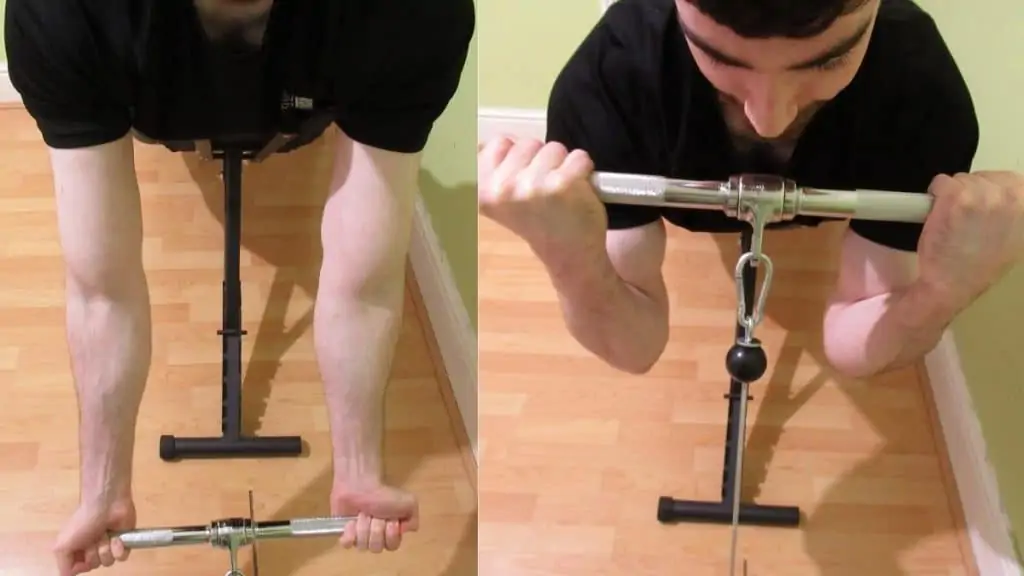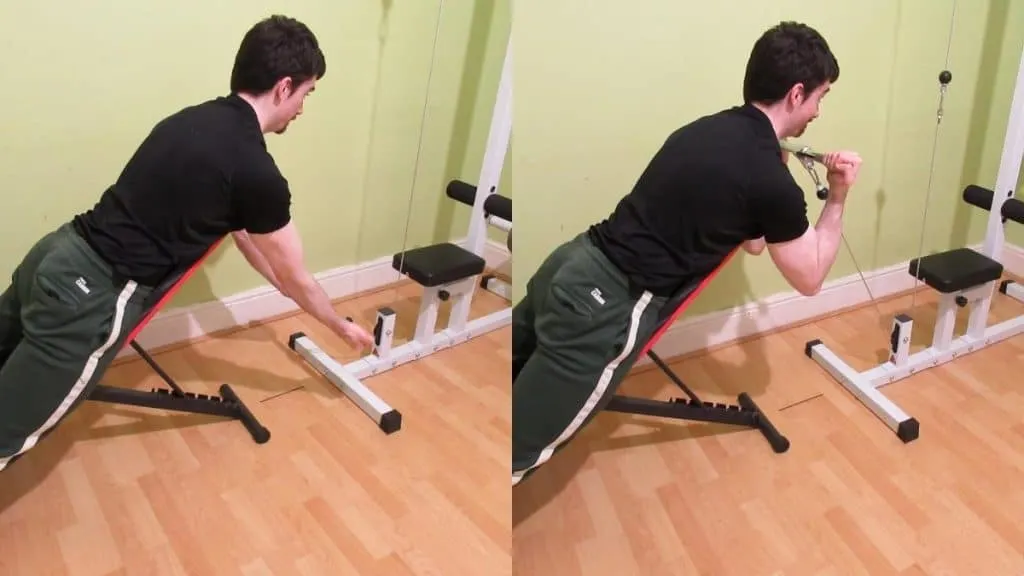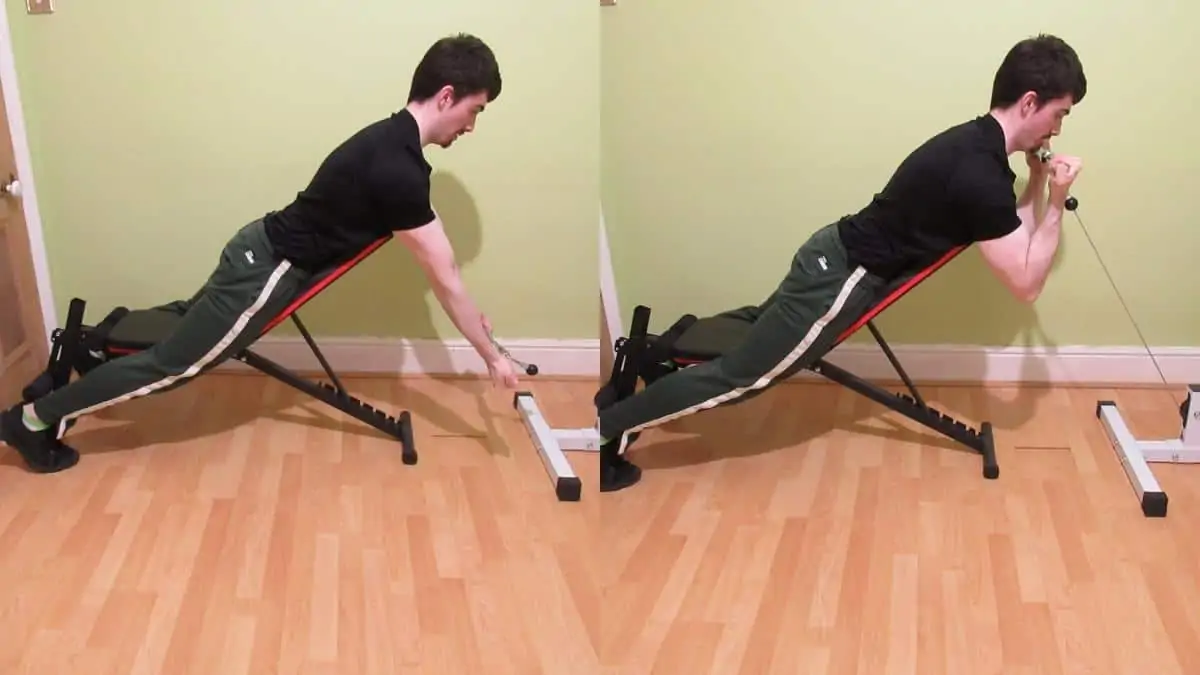Cable spider curls are one of the most underrated exercises for working the bicep muscles. Unlike regular dumbbell spider curls, the cable version provides constant tension and an even stronger muscle pump, which results in hypertrophy via metabolic stress.
The following exercise guide shows you how to do a spider curl with cables. We’ll then move onto the advantages and disadvantages of the exercise so that you can decide if it’s right for your workout routine.
Related Exercise: Standing straight bar cable curl
Cable spider curl exercise details
- Main Muscles: Biceps brachii
- Secondary Muscles: Brachioradialis, brachialis, forearm flexors
- Exercise Type: Strength
- Exercise Mechanics: Isolation
- Difficulty Level: Beginner
- Equipment Needed: Adjustable bench, cable column, curl bar
How to do cable spider curls

- Wheel an adjustable bench over to a cable column.
- Set the bench backrest angle to 60 degrees.
- Lower the cable pulley all the way to the bottom.
- Connect a curl bar attachment to the cable clip.
- Sit on the bench with your chest facing the back pad.
- Reach forward and grab the bar.
- Curl the bar toward your front delts and flex your biceps forcefully as they push up against your forearms.
- Hold the contraction for a moment and then lower the weight under control until your elbows are fully extended.
- Repeat for 3-4 sets of 12-20 reps.
Cable spider curl advantages and disadvantages

Although cable spider curls can be challenging to set up, this extra time expense will be worth the end results if you’re into bodybuilding. Here’s what to expect when you try the exercise for the first time.
Advantage: Constant tension
Unlike a hammer spider curl or a kettlebell spider curl, both of which use free weights, cable spider curls provide constant tension. This is because from the moment you lift the weight off the stack, it’s down to your biceps to lift the resistance. As such, your arms will be forced to work harder for longer when you do spider curls with cables rather than with free weights.
Disadvantage: Difficult setup
Spider cable curls really blast your biceps, but they’re a complete nightmare to set up, especially if you train in a busy fitness facility. To do them properly, you need access to an adjustable bench and a cable column, which isn’t always feasible at peak gym times. Not only that, but you also have to grab the bar after you’ve got your body in the correct position, something which isn’t all that straightforward if you don’t have long arms.
Advantage: Strong muscle pump
As mentioned, performing the spider curl cable style means that your biceps get to benefit from constant tension. Well, another benefit of this is that you earn yourself a stronger muscle pump because your biceps don’t get a chance to rest during the set. As a result, your arms become engorged with blood, which can help to make them look leaner and more vascular.
Disadvantage: Uncomfortable torso position
Like all spider curls, the cable version can put excessive pressure on your sternum because you have to press your chest into the back pad of the bench in order to perform the exercise. For this reason, you might want to choose another movement that’s not as uncomfortable if you have a hard time feeling your biceps work.
The verdict: How effective are spider cable curls?

Cable spider curls are very effective for building the biceps because they provide constant tension. This unique resistance results in a stronger bicep pump, which can enhance your mind-muscle connection and help to improve the appearance of your arms during training.
The downside is that spider cable curls take a lot of time and effort to set up compared to exercises like the drag cable curl. You need to be able to wheel a bench from the free weight area over to a cable column, which isn’t always possible if you train in a public gym.
Of course, there are many other cable exercises for the biceps that you can do if you’re short on time or only have access to minimal equipment.
Drawbacks aside, the cable spider curl is still a fantastic exercise for safely building better biceps. Cable resistance is much easier on your joints than free weight tension because the pulley helps you to stabilize the weight to a degree. As such, you can focus on working your biceps rather than on having to balance a bar, which helps to keep tension on the target area.

